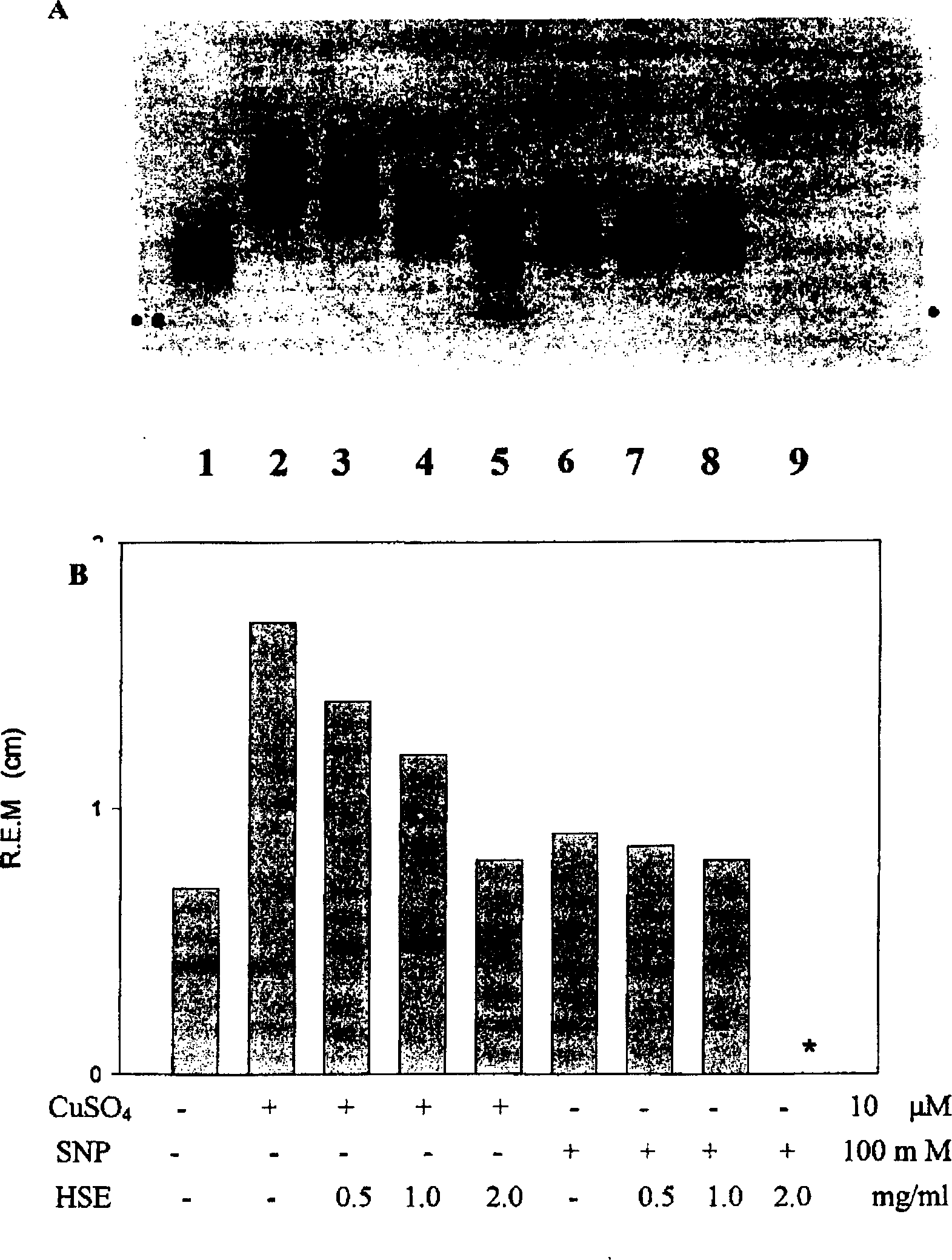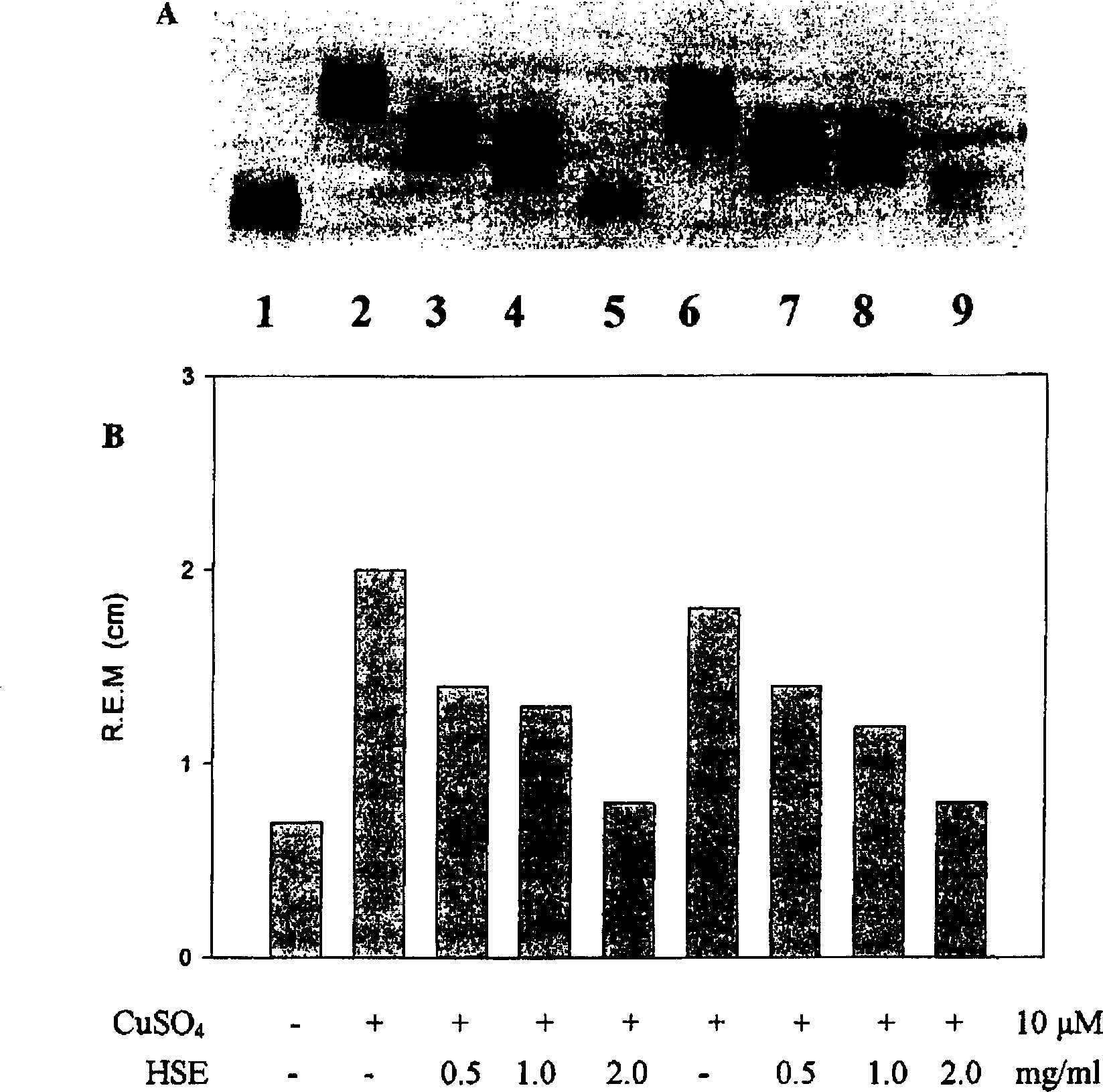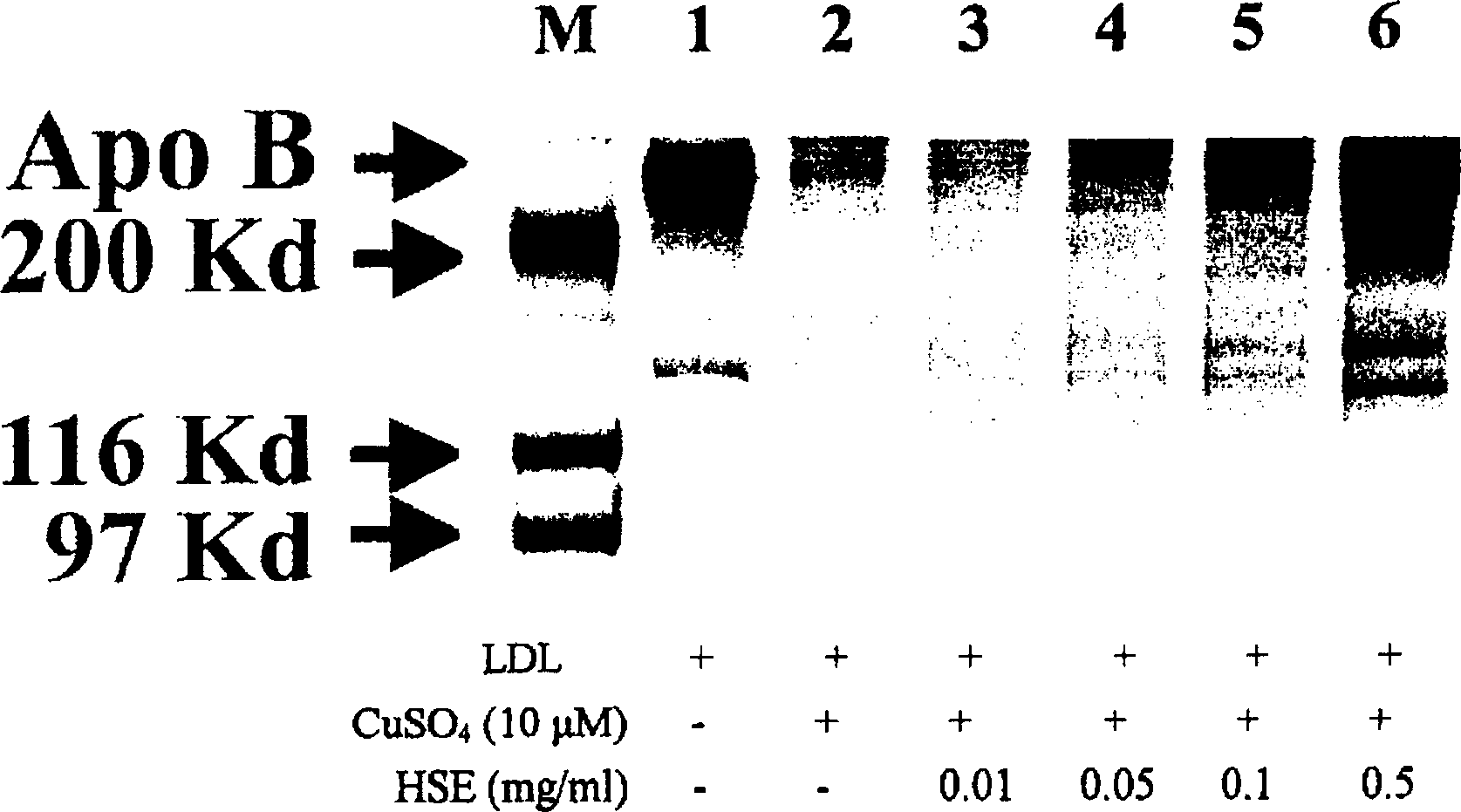Application of Hibiscus sabdariffa Linn extractive in preparing medicine for inhibiting cardiac and cerebral vascular diseases
The technology of extract and roselle is applied in the field of roselle extract for preparing drugs for inhibiting cerebral cardiovascular disease and atherosclerosis, and can solve the problems of easy oxidation of LDL and the like
- Summary
- Abstract
- Description
- Claims
- Application Information
AI Technical Summary
Problems solved by technology
Method used
Image
Examples
example 1
[0023] Example 1: Inhibitory effect on LDL oxidation
[0024] When LDL is not oxidized, its molecular weight is small, so it moves faster in gel electrophoresis experiments at the same potential. When LDL is oxidized, its molecular weight is larger, and relatively slower in gel electrophoresis experiments at the same potential. We added different concentrations of roselle extract (0.5, 1, 2mg / ml) and 10μM copper sulfate (CuSO 4 ) and 100mM sodium nitroprusside (Sodium Nitroprusside (SNP)) together at 37 degrees Celsius to induce LDL oxidation for 24 hours, it can be found that the higher the concentration of the roselle extract, the more significant the effect of inhibiting LDL oxidation, The faster the electrophoretic movement rate. Adding Roselle extract to inhibit LDL oxidation after SNP-induced LDL oxidation, compared with CuSO 4 After inducing LDL oxidation, the effect of adding roselle flower extract to inhibit LDL oxidation is similar, but the effect is less significa...
example 2
[0034] Example 2: Lowering Triglyceride and Cholesterol in Plasma
[0035] experimental animals
[0036] The experimental animals used in the present invention are New Zealand white rabbits (about 2-2.2 kilograms in body weight) and Sprague-Dawley rats (about 200-220 grams in body weight). A total of 30 rabbits were divided into 5 groups, 1 in each cage, 150g diet per day, among which 3 groups were fed with 95.7% solid food, 3% lard and 1.3% cholesterol for 10 weeks, which could induce atherosclerosis, The roselle extract test group then added 1% or 0.5% roselle extract; a total of 24 rats were divided into 4 groups, 6 in each cage, and 25g diet per day, of which three groups were fed with 95.7% solid food, 3 % lard and 1.3% cholesterol, fed for 12 weeks, can induce atherosclerosis, and the roselle extract test group was added with 1% or 2% roselle extract.
[0037] The rabbits were divided into 5 groups, 6 in each group. The first group was fed with normal diet, the second ...
example 3
[0039] Example 3: Inhibition of atherosclerosis
[0040] The deposition of endothelial oil in arteries is the leading stage of atherosclerosis, that is, if the deposition of endothelial oil in arteries reaches a certain amount, it will often lead to the occurrence of atherosclerosis. The large thoracic artery of the rabbit in Example 2 was stained to observe the situation of oil deposition. The results showed that the arterial endothelium of the high-cholesterol diet group had a lot of oil deposition, but with the addition of roselle extract, the oil deposition was significantly reduced. The result is as Figure 7 shown. It has been confirmed that Roselle extract can inhibit the occurrence of atherosclerosis and cerebrovascular diseases.
[0041] We also took the arteries of the rabbits in Example 2 for tissue sections, and found that the arteries of the rabbits fed a high-cholesterol diet supplemented with 0.5% and 1% roselle extract and the arteries of rabbits fed a norma...
PUM
 Login to View More
Login to View More Abstract
Description
Claims
Application Information
 Login to View More
Login to View More - R&D
- Intellectual Property
- Life Sciences
- Materials
- Tech Scout
- Unparalleled Data Quality
- Higher Quality Content
- 60% Fewer Hallucinations
Browse by: Latest US Patents, China's latest patents, Technical Efficacy Thesaurus, Application Domain, Technology Topic, Popular Technical Reports.
© 2025 PatSnap. All rights reserved.Legal|Privacy policy|Modern Slavery Act Transparency Statement|Sitemap|About US| Contact US: help@patsnap.com



